Glossary of Ingredients
Please note our new telephone number is 01458 269259
Abies alba cone oil
Essential oil, steam distilled with a beautiful crisp, dry, coniferous aroma with earthy undertones. In Aromatherapy used for arthritis, muscle pain, rheumatism, and acute bronchial conditions.
Acrylamide / Sodium Acrylate Copolymer
Corn starch derived, this is a film former and thickener for cosmetic formulations. It stabilises emulsions.
Aesculus hippocastanum (Horse chestnut) extract
It has a high level of saponins making it an effect skin purifier with skin softening properties. One saponin called escin, has strong anti-inflammatory and vasoprotective properties; it is a reducing enzyme which breaks down protein. Reduces micro circulation issues in the eye area.
Alcohol
Humans have used alcohol in many forms for thousands of years. It has been used for various purposes: drinks, medicine, and as a solvent for essential oils and other substances. Due to its antiseptic qualities, alcohol is also used as a preservative. Natures Children uses denatured alcohol which is natural ethyl alcohol mixed with other substances (denaturants), making it unusable for drinking.
Allantoin
Is a natural compound found in many different organisms, animals, plants and bacteria. It is well known as a primary constitute in Comfrey. It is a natural soothing anti-irritant skin protectant known for promoting the healing of wounds, burns and scars.
Allergens
Allergic reactions by sensitive people can be triggered by a wide range of substances such as types of food, pollen, animal fur, dust mites and a host of chemicals both natural and synthetic. Actual reactions to cosmetic and toiletry products are very rare. In Europe and many other countries all the ingredients in cosmetics are listed on product packaging. In 2005, the cosmetics industry began labelling fragrance substances, thought to be allergens, individually to show where they are present in products above a certain level. N.B. when an allergen is listed it does not mean it will cause a reaction. Often in a compound such as essential oils the individual material may be ‘quenched’ by supporting constituents hence aromatherapy has a very good safety record.
Aloe barbadensis
Aloe Vera is believed to assist with burns so it is considered anti-inflammatory and anti-irritant. The plant is 99% water, the powder contains salicylates which are known to relive pain, and it also contains other healing minerals.
Algin and/or Alginic acid
Coming from a variety of brown seaweed or brown algae, it has intense moisture retaining properties. Maintains the skins hydration barrier and improves the appearance with vital vitamins, minerals and amino acids. Leaves the skin primed for everyday activity.
Amber powder
Amber powder is a natural precious gem stone, the best found in Poland and Lithuania. It has electrical properties which provide valuable stimulation to the cells and the normalisation of cellular energy processes. It contains up to 40 compounds. Strongly anti-inflammatory.
Amyl cinnamal
A synthetic perfume ingredient which has a floral scent reminiscent of jasmine.
Ananas sativus fruit extract
The delicious fruit of the pineapple. Contains natural vitamin C and a special enzyme called bromelain which reduces inflammation and breaks down dead keratinised skin cells. It also has free radical scavenger skin properties.
Anthemis nobilis flower oil
Roman chamomile oil is known for its soothing and calming effects. It is said to help relieve anxiety and is beneficial in hair and skin formulas. In Herbalism and in Aromatherapy it is used in skin and hair care, burns, acne, rashes, inflammation, digestion, nervousness, cramps, spasms. Whilst having so many uses the essential oil is very costly and is also used in fine fragrances for its sweet aroma.
Arctostaphylos uva ursi (bearberry) extract
Bearberry is astringent with anti-bacterial and anti-oxidant properties. It is often used as a skin brightening agent with purifying tonal effects. It is favoured by people with sallow, darker complexion or age spots as it enhances natural luminosity.
Aristoelia chilensis fruit extract
Chilean wine berry or maqui berry. The berries from this small tree contain polyphenols and flavonoids, making the extract a free radical scavenger and preventing premature ageing.
Argania spinosa kernel extract
Argan oil is extremely high in vitamin E and other antioxidants. It is used as an anti-ageing oil as it improves skin texture and feel, restores the skin’s hydro-lipid layer with advanced hydration.
Arnica montana flower extract
Widely used for capillary congestion and thread veins. Arnica enhances the appearance of dry or damaged skin, reducing flaking and restoring supple.
Aqua
Water. There is an internationally agreed nomenclature for all cosmetic ingredients (INCI). Latin is often used, such as in this case where aqua simply means ‘water’ in Latin.
Benzyl alcohol
A solvent and preservative and topical antiseptic. It is a constituent of jasmine, hyacinth and many other plants.
Benzyl benzoate
It is on a list produced by the World Health Organisation as a medicine. It is an aromatic ester of natural benzyl alcohol and benzoic acid and it occurs in a number of flowers. It has uses an insect repellent and also to reduce the symptoms of asthma. It is also used as a natural preservative.
Benzyl nicotinate
It is an ester of benzyl alcohol and nicotinic acid and acts as a skin conditioning agent.
Benzyl salicylate
This is a fragrance additive with a mild odour slightly balsamic or floral. It is a fixative for perfumes.
Benzoic acid
Benzoic acid acts as a pH adjuster and preservative. It is naturally found in berries and essential oils.
Betaine
This is a small amino acid widely found in plant juices and extracts. It was named after its discovery in sugar beet (Beta vulgaris) in the 19th century. Amino acids carry out many important bodily functions, such as giving cells their structure. They also play a key role in the transport and storage of nutrients. Betaine is anti-inflammatory, anti-ageing and strengthens hair.
Beta-sitosterol
This is one of several plant phytosterols found in fruits, vegetable, nuts and seeds. Sometimes applied as medicine to treat burns and wounds. In cosmetics it regulates sebum and balances the skin.
Borago officinalis seed oil
Sometimes called starflower oil, it is well known for its gamma-linoleic acid (GLA) and vital omega-6 fatty acid. Stimulates cellular repair with strong anti-inflammatory properties. Helps maintain the skin lipid barrier.
Boswellia neglecta (frankincense oil)
This is the same as Boswellia carterii, the ancient name is olibanum, and it is a timeless ingredient used in skincare products. The ancient Egyptians used it to preserve their mummies. It is a natural anti-ageing essential oil with healing and cell regenerative properties.
Bisabolol
A naturally accruing alcohol found in many essential oils such as chamomile. It is used in many baby products for its soothing and irritant reducing effects. It calms and heals distressed skin and its small molecular structure assists penetration by other nutrients.
Brassica alba seed oil
White mustard oil which is the milder form of the mustard. It has astringent and stimulating properties and is well known as a traditional anti-rheumatic and tonic.
Brassica oleracea acephala extract
This is curly kale, high in vitamin A and K, a powerful anti-oxidant and superfood. It has an affinity with the elastin of the skin, decreasing the appearance of wrinkles and Vitamin K helps reduce redness and swelling.
Butylphenyl methylpropional
A fragrance additive for use in personal care products. A small number of people are sensitised to this material and it occurs on ingredients lists as an allergen.
Butyrospermum parkii butter
Shea butter is extracted from the nuts of the shea tree, which grows in the savannah of Western Africa. The English name ‘Shea’ comes from its Bambara name ‘sii’, which means sacred. For millennia, people have used it to protect their skin from the drying winds and sun as well as to heal many skin problems, minor cuts and burns. Containing essential fatty acids, phytosterols, vitamin E and D, pro-vitamin A and allantoins; all these natural skin nutrients make Shea butter a superfood for skin.
C13-14 isoparaffin
A petroleum derived ingredient with a wax like texture that functions as a jellying agent.
Calcium aluminium borosilicate
Minerals sometimes used as a bulking agent or to provide sparkle.
Calendula officinalis flower extract
This lovely bright orange flower is commonly called Pot Marigold. Calendula has a long history of use as a wound-healing and skin-soothing botanical. Calendula also has anti-inflammatory and antimicrobial activity. It is most often used topically for sunburn, lacerations, abrasions, and skin infections.
Calcium pantothenate
Otherwise called vitamin B5, an essential vitamin in the skin and body. When applied to the skin this vitamin stimulates healing and cellular proliferation with the added benefit of reducing pore size.
Camellia sinensis
The legendry camellia oil of japan, rich in oleic acid and vitamins. Almost an identical match for the skin, letting it absorb quickly, contains natural anti-oxidants. Geisha girls use the oil to remove stage makeup and nourish the skin.
Candelilla/jojoba/Rice bran polyglyceryl-3 esters
This blend has the trade name Emulium® Kappa and is derived from a number of natural waxes to allow for the creation of oil in water creams. The blend, apart from being an emulsifier, is a rich nutrient cocktail that smoothes and perfects delicate skin and is bio-compatible with the skins own chemistry.
Cananga odorata flower oil
This oil is used a lot in aromatherapy because of its sweet floral aroma. It has relaxant and sedative effects.
Capryloyl tetrapeptide-3
See Dextran
Caprylic/Capric triglyceride
This chemical name simply refers to a specific fraction of coconut or palm tree oil. Such oils contain certain fatty acids which formulators use to give more stable, and skin loving, caprylic and capric fatty acids which create a dry, silky feel on the skin without greasiness. This naturally derived material is a great choice for sensitive skin.
Caprylyl methicone
A silicone which reduces the oiliness or greasiness of other ingredients. It works as a cosolubiser between silicons and organic oils, so dispersing the vitamins and other active ingredients in a cosmetic solution.
Carboxaldehyde
A light floral fragrance.
Cera alba white beeswax
White beeswax is great for holding moisture and preventing the clogging of pores, sometimes used as a healing agent. Provides a pleasant silky texture. Has been used as skincare ingredient for thousands of years.
Cetyl alcohol
Called a fatty alcohol many years ago, when it was harvested from sperm whales, now an endangered species. In Natures Children be sure it comes from vegetable oil. It works as an emollient, emulsifier, thickener and carrying agent for other ingredients contained in a cosmetic solution. Not to be confused with ‘normal’ alcohol which when overused can be drying. Cetyl alcohol is well known to effectively condition and soften the skin and hair.
Cetearyl glucoside
A vegetable emulsifier combining coconut and glycose sugar. Non-irritant, hypoallergenic and non-comedogenic.
Cetearyl olivate
Obtained from natural olive oil, it is a form of an oily wax. It is an emulsifier, so blends ingredients together in cosmetic products with moisturising properties, also used as a hair conditioning agent.
Ceteareth-20
A fatty alcohol, being a blend of natural fatty acids from coconut oil and ethylene oxide. It is an emollient emulsifier which works to thicken solutions, assisting other ingredients to dissolve, a stabiliser.
Chamomilla recutita flower extract
German Blue Chamomile also known as scented mayweed, a common wild flower, contains a valuable essential oil. This herb promotes healing for skin conditions, burns, rashes, joint pain, inflammation; the essential oil has a warm sweet, full bodied aroma. The essential oil has a deep blue colour from chamazulene a well-known anti-inflammatory.
Cinnamomum camphora formosana leaf oil rectified
An essential oil obtained from the leaves of the camphor. Stimulates blood flow giving a localised warming and sedative effect.
Cinnamomum zeylanicum bark oil
An essential oil from cinnamon bark with a warm spicy aroma with analgesic properties, so calming for muscular aches.
Cinnamyl alcohol
A fragrance ingredient with deodorant properties occurring naturally in cinnamon leaves, styrax and Balsam of Peru.
Citral
The older name for citral is lemonal which gives the clue that it is a natural constituent of lemon peel oil. It occurs in the volatile or essential oils of lemongrass, lemon, orange, lime, and pimento and others. It is one of the main characteristic flavours in the citrus family, alongside limonene, and similarly a few people become irritated by it, so in isolation it is considered an allergen.
Citric acid
A weak safe organic acid found in citrus fruits and widely distributed in plants. It is a natural preservative and may be used to adjust the acid alkali balance of a product.
Citronellol
This natural component of many essential oils has a sweet rose-like scent. These oils include rose, geranium, neroli, chamomile, tagetes, lemongrass, basil and lavender. Citronellol is used in the formulation of bath products, bubble baths, cleansing products, hair care products, moisturizers, perfumes and skin care products.
Citrus aurantium amara leaf oil
The common name for this popular essential oil is Petitgrain. One of the classic ingredients of eau-de-cologne. Petitgrain oil has a woody and at the same time a floral smell. The oil is distilled from the leaves of the bitter orange tree. Petitgrain is a particularly good relaxant, soothing to the nervous system and antispasmodic. Its anti-inflammatory properties make it useful against acne with antioxidant and antimicrobial properties.
Citrus aurantium dulcis peel oil
Sweet orange oil or zest. From the sort of oranges we eat. Well-known for its uplifting properties, orange essential oil is soothing to the mind and helps to relieve stress. Orange zest is shown to increase the blood flow to the skin so is helpful at soothing dry, irritated skin as well as acne-prone skin.
Citrus aurantium flower oil
The essential oil known as neroli, with the lightest and sweetest of aromas, said by aromatherapists to be calming and in skincare to heal and demesnes scar tissue.
Citrus grandis seed extract
An extract from grapefruit used as a natural preservative due to its anti-microbial effect.
Citrus limon peel oil and powder
The zest from lemon peel is often used to relieve the symptoms of respiratory conditions but is best known for its use in skincare along with its antiseptic properties. The powder contains enzymes to help cleanse the skin and to remove dead skin cells, and remove blackheads and providing a clear complexion.
Citrus limon (lemon) peel extract
Not quite a lemon but called a citron which is a large fragrance citrus fruit. The extract possesses a skin tightening and toning effect it also has a purifying and lightening effect making it ideal for stressed, tired and older skin.
Citrus nobilis (mandarin or tangerine) oil
Mandarin oil contributes a happy, uplifting feeling through its cheery smelling essential oil. Especially useful for fractious and tired children. Soothing for nervous conditions and calms emotions.
Citrus sinensis orange peel oil expressed
The orange that we are all familiar with from the shops. This is an essential oil that comes from the peel, sometimes called zest, it can soothe dried and irritated skin and revive dull skin. Orange oil may also stimulate collagen and synthesis. The smell is pleasing and reminiscent of the fruit.
CI 77891 titanium dioxide
Titanium dioxide is a natural mineral ingredient and is used in a variety of personal care products, including sunscreen, as it is a very effective UV filter. In sunscreen some people don’t like it because it gives a grey or white tone to the skin; this characteristic is also used to impart a whiteness to colour cosmetics, as it increases opacity or reduces the transparency of a formula.
CI 14720
An acid red colorant, a food colourant.
CI 19140
A lemon yellow food colorant also known as E102.
CI 42090
A food colorant with an E number E133; it is a blue colour.
CI 77491 iron oxide
Iron oxide has been used to colour cosmetics since the early 1900’s. There are three colours – yellow, red and black and there are three colour groups. They are found from eye shadow to lipstick, blushers and foundation.
Cl 75810
Chlorophyllin (Cl 75810) provides a green colour. Chlorophyll absorbs light in the chloroplasts of plant cells and drives the reaction of photosynthesis. It uses the energy of light to fix carbon dioxide into carbohydrate and uses this to make plants grow. Studies have suggested that chlorophyll has protective, healing qualities.
Coco glucoside
Derived from coconut oil and fruit sugars it is a cleansing tensed, surfactant foaming agent conditioner and emulsifier.
Cocamide DEA
The origin of this surfactant thickener and foaming agent is the ubiquitous coconut oil.
Cocamidopropyl betaine
Also known as Coco-betaine, it is used as a cleansing agent and promotes lathering and foaming. As its name suggests it is partly derived from coconuts but should still be viewed as a synthetic wash active.
Commiphora myrrha (myrrh) oil
Often associated with frankincense, the essential oil from this desert tree has properties to increase tissue repair and stimulate collagen production for a smooth and firm skin. The ancients used it for massage to maintain skin hydration and to turn the skins appearance.
Coumarin
Coumarin is a fragrant organic compound occurring naturally in many plants it gives the smell to freshly cut grass and hay.
Crambe abyssinica seed oil
Abyssinian oil with a unique molecular structure is relatively new in skincare. It is very light and easily absorb provides a natural protection against the elements and pollution. Also used in haircare to detangle and to add shine.
Cucurbita pepo (pumpkin) seed oil
Rich is omega-3 and fatty acids along with a high content of vitamin E. Described as an all round anti-ageing superpower, as this oil soothes, hydrates, protects and stimulates regeneration of new skin.
Cyclopentasiloxane
Used as a conditioner delivery agent, lubricant and solvent. It is a silicone that gives a silky and slippery feel to the touch, acts as a mild water repellent and so forms a barrier on the skin. Can fill in fine lines and wrinkles, giving the skin a plump look.
Cymbopogon flexuosus herb oil
Lemongrass is used a lot in Thai cooking due to its fresh lemony sharp taste. In skincare it is used as a tonic and for its anti-bacterial properties.
Daisy
Bellis perennis. Daisy flower has brightening products with astringent and tonic properties.
Daphne
Daphne laureola extract can improve the skin lipid barrier and help skin moistures with traditional anti-septic and anti-bacterial properties.
Daucus carota sativa (carrot) root powder
Carrot root powder can be used as an active, filler or gentle exfoliator and is a good source of vitamin B and other nutrients, especially antioxidants.
Dehydroacetic acid
A fungicide and a bactericide, preventing growth of microorganism that contribute to a product decay.
Decyl glucoside
A natural, non-ionic surfactant, ideal for all foaming and cleansing products. Decyl glucoside is obtained from renewable raw materials, through a combination of plant based fatty alcohols (coconut C8) and glucose (corn starch). Its touch is not comparable with that of a foam obtained using anionic surfactants. For this reason it is usual to combine decyl glucoside with cocamidopropyl betaine.
Dextran
Is associated with capryloyl tetrapeptide-3. This biomimetic peptide works for the dermal-epidermal junction. Working at a cellular level it minimise the signs of premature ageing and clinical trials show an outstanding reduction in the fine lines and wrinkles within 28 days.
Dicaprylyl ether
A plant derived oil which is a skin conditioner and solvent that creates a smooth appearance. It gives a dry and non-greasy touch and its fast diffusion the skin.
Disodium EDTA
Used for a variety of purposes it works as a preservative and stabiliser but also can enhance the foaming action of a solution. It counteracts the adverse effects of hard water.
Elaeis guineensis oil
Palm oil has a high vitamin A and vitamin E content. These first serve as a powerful source of antioxidants which fight free radicals that cause damage to the skin; moreover it can help repair damage that has already been done to the skin, and prevent further damage. Also it serves as a great solution to soften old scars and even stretch marks, leaving skin looking fresher and younger. Over time, used regularly, people who suffer from skin diseases such as psoriasis and eczema will find relief.
Ethylehexylglycerin
A semi-natural preservative, used as natural alternative to parabens, derived from glycerine stems and plants. Used in minute quantities it is considered a preservative enhancer.
Etidronate
Always combined with sodium and used as a chelating agent which prevents various mineral components from binding together and effecting the formulation. It also helps maintain fragrance and prevents rancidity.
Essential oil
An essential oil is the liquid aromatic or fragrant constituent of a plant obtained by steam distillation. Essential oils are very complex having many hundreds of natural chemical constituents with a variety of cosmetic and medicinal applications. Essential oils are the basic tools of Aromatherapy.
Eucalyptus globulus leaf oil
Blue gum eucalyptus which has a wide ranging uses it is associated with the respiratory system, breathing and is an anti-spasmodic and decongestion. Its woody pleasing aroma has stimulating and tonic properties.
Eucalyptus citriodora leaf extract
The lemon scented eucalyptus essential oil with the reviving and refreshing action some say calms the mind.
Eucalyptus radiata leaf oil
Eucalyptus radiata essential oil is cooling, refreshing and energizing. Lighter in smell than other eucalyptus types, it has many of the same supportive properties. Because it is relatively gentle and non-irritating, it is the preferred choice for children. Both orthodox and alternative medicine have recognized the many influential compounds of eucalyptus, making it a key ingredient in cough and throat medicines, as well as chest ointments.
Eugenol
A natural constitution of essential oils with disinfectant and anaesthetic properties. It can be a mild skin irritant.
Faex extract
It is a yeast extract and a source of B vitamins, so a skin conditioning agent often used for blemished skin. Loosely called a marmite of skin care.
Farnesol
Farnesol is a naturally occurring component of essential oils, such as jasmine, ylang-ylang oil, rose and neroli. It has a gentle odour reminiscent of violets and is wonderful for creating a sweet, floral perfume. In Europe, farnesol is included on the list of “allergenic” substances.
Foeniculum vulgare oil
An essential oil from the crushed seeds of the sweet fennel plant. Known since early times as a culinary herb, it has a characteristic sweet, earthy aroma, much like aniseed. Although its most popular use is that of a digestive agent, sweet fennel has long been a constituent of gripe water, a liquid given to infants and children with colic, gastrointestinal discomfort, teething pain, reflux and other stomach ailments.
Fragaria vesca extract
Strawberries are very popular and the extract is recommended for oily skin to help with sebum reduction and large pores. It has insurgent properties as well as anti-inflammatory effects which reduce itching and dry skin.
Fructose
Often called fruit sugar and is a skin conditioning humectant that is it has water binding properties. It leaves the skin more hydrated and radiant, promoting health as skin cells need moisture to function.
Fucus vesiculosus extract
This extract comes from, dried bladder wrack seaweed. It contains free radical antioxidants, such as phlorotannin, and bioactive polysaccharides, amino acids, vitamins and minerals. It is used against skin ageing, to improve skin elasticity and provide hydration.
Geraniol
It is the primary natural constituent of rose, palmarosa and citronella essential oils, providing their characteristic smell. It also occurs in small quantities in geranium, lemon and many other essential oils. As smell and taste are closely related, geraniol is used in flavours such as peach, raspberry, grapefruit, red apple, plum, lime, orange, lemon, watermelon, pineapple and blueberry. It is listed as an allergen for people sensitive to it.
Goat milk
Is not too alkaline or acidic so it is a good ingredient for dry skin formulas. Contains lactose acid and also contributes to a gentle low to neutral pH.
Griffonia simplicifolia seed extract
A film forming protective ingredient that demesnes associated skin problems due to environmental pollutants.
Glycine soja oil
Obtained from the beans of the wild soybean plant, which is native to East Asia. It is a potent antioxidant, very healthy, and has zero cholesterol and minimal fat. One of glycine soja extract’s components – Genistein – has been shown to stimulate the skins production of collagen which in turn increases its elasticity and a youthful appearance. Moreover, glycine soja is also useful for cleansing. Natures Children especially use it for its molecular properties as it makes an emulsifier, which enables it to reduce the surface tension on oily molecules. This allows water molecules to mix with the oil and create a unique washing oil.
Glycerin
More properly known as glycerol. It is the natural molecular backbone to all lipids or oils and fats. It is used as a means of improving smoothness, providing lubrication or slippage and as a humectant, meaning it holds water so acting as a moisturiser. Natures Children only use vegetable glycerine not the form obtained from animal fat or synthetics.
Glyceryl stearate
Usually derived from palm kernel, vegetable or soya oil and found naturally in humans. Used as an emulsifier it also easily penetrates the skin and slows the loss of water from the skin.
Glyceryl undecylenate
Derived from castor oil beans and combined with glycerin, an emollient and preservative enhancer.
Gold
Gold flakes add allure and go back to the origins of cosmetics – Cleopatra used gold face masks. Connecting gold is said to improve skin tone and elasticity; nano particles are used in the most luxurious products and eye creams.
Helianthus annuus seed oil
This is sunflower oil, best known for its high beta-carotene content, a fat-soluble compound found in a various vegetables and fruits. The material has many antioxidant properties which are greatly beneficial for human health, especially skin care. The essential fatty acids contained in sunflower can prevent skin problems including sunburn and dermatitis, acne issues and this natural oil creates a protective layer to prevent contact with bacteria.
Hexyl cinnamal
Derived from chamomile oil and is a masking agent used in fragrance.
Hydrogenated polydecene
This is synthetic polymer used because it has some rather good skin smoothing properties. Polydecenes are non-sticky emollients which are easily spreadable and create an easy application for creams.
Hypericum perforatum flower extract
This plant flowers at midsummer or solstice time so is called St John’s Wort. Wort in Old English means a healing herb. History has long told the tale of the various medicinal uses of St John’s Wort. Tannins, astringent by nature, are responsible for St John’s Wort wound healing ability as these compounds dry and tighten or bind the skin. They are especially beneficial for burn, abrasion or wound healing and reducing inflammation and irritated skin.
Hydroxycitronellal
A natural perfume ingredient widely found in many essential oils such as lime, lemon and ylang ylang.
Hydroxyisohexyl 3-cyclohexene carboxaldehyde
A common perfume ingredient known as lyral. It has a delicate sweet light floral odour.
Hydroxypropyl cyclodextrin
Cyclodextrins are formed during the bacterial digestion of wood and other plant cellulose.
Hydrolysed wheat protein
It is an important ingredient derived from soft wheat. It gives amino acids and high glycine levels to skin and hair. Film forming tensor properties increase the firmness of the skin, nourishes and smooths skin and hair, improves touch and softness whilst retaining moisture so decreasing depth of wrinkles.
Hyssopus officinalis oil
Hyssop is used traditionally in cough medicine and for sore throats. It has a sharp and piercing odour with a tonic and stress relieving effect.
Illite
Is a crystallised non-expanding clay mineral sometimes used as an exfoliator.
Inositol
A nutrient in the vitamin B complex which is important for the cell membrane. The lack of inositol leads to poor hair growth, skin dryness and even eczema.
Isoeugenol
A natural component of essential oils such as ylang ylang.
Isohexadecane
Is a very high purity paraffin emollient and solvent, it helps create a very creamy, non-greasy, light and silky feeling on the skin.
Isostearyl isostearate
A skin condition agent and emollient skin moisturiser providing a good sensory experience.
Isopropyl palmitate
It is a man-made moisturiser and thickening agent which is well known within the cosmetic industry. It is an ester of isopropyl alcohol, a natural gas propane derivative, and palmitic acid of vegetable origin. It is easily spreadable.
Iron oxides
Iron oxide has been used to colour cosmetics since the early 1900’s. There are three colours yellow, red and black and there are three colour groups; they are found from eye shadow to lipstick, blushers and foundation.
Kaolin
A white absorbent natural mineral clay often called china clay. Used usually to absorb access oil or to absorb other toxins as in clay masks.
Lactic acid
Healthy skin has a low pH, meaning it is naturally acidic. Derived from sour or fermented milk like yogurt, lactic acid is a popular beauty aid for those seeking to improve their skin's texture and hydration level. Even Cleopatra, the former Egyptian queen known for her beauty, was rumoured to have bathed in sour milk to improve her skin. Lactic acid is part of the natural moisturising factor or skin acid mantle need to maintain skin health.
Lactobacillus ferment
The skin contains natural moisturising factors and importantly every individual has a colony of friendly bacteria known as the skin acid mantle. Lactobacillus helps lower the skin ferment and the skin pH level, so maintaining natural moisture and skin health. By middle age the skin acid mantle does not regenerate as earlier, this ferment assists.
Lactobacillus/bulgaricus ferment filtrate
This bacteria is part of our natural skin and gut microflora. It supports the pH of the skin and the skin acid mantle.It can be called probiotic and capable of stimulating collagen synthesis. It is the common bacteria found in natural yoghurt.
Lactobacillus/dipteryx odorata seed ferment filtrate
A tonka bean skin illuminating bioferment, giving a more revitalised and younger looking complexion. Rich in polyphenols that help to provide even skin tone with anti-oxidant protection. Absorbs light in the UVA and UVB spectra and reflecting the more luminous light particles. The complex is moisturising and conditioning for mature skin.
Lanolin
The natural oils and waxes usually coming from sheep fleece. Used in high value cosmetics and skin treatment products. Wool wax protects sheep against adverse weather conditions. Its emollient properties help maintain the correct moisture balance of the skin without impairing the natural skin function. In the 60’s lanolin was contaminated by chemicals used by farmers applying bug killing washes. Today lanolin is always purified and very unlikely to causes allergic reactions.
Laureth-4
Can be used as a surfactant or an emulsifier it is derived from a lauryl alcohol.
Laureth-7
A surfactant and emulsifier and modification, lauric acid a natural fatty acid mostly derived from coconut oil.
Lauryl glucoside
Lauryl glucoside is naturally derived from coconut oil; it is completely bio-degradable and is a surfactant with emulsifying properties. It adds a natural foam to body care and haircare products. As a cleansing agent it has good dermatological compatibility.
Lavandula angustifolia oil
Loved for its fragrance and flower colour, lavender was a favourite oil for the Roman bath house. In fact the Latin origin of the name lavender means to wash! A favourite essential oil in Aromatherapy due to its many uses. Natures Children uses it primarily for its fragrance and anti-inflammatory or antiseptic properties.
Lavandula angustifolia (lavender) flower
Exfoliant, acts as a scrubbing agent and purifies the skin.
Lavandula angustifolia (lavender) flower extract
A maceration of lavender flowers in vegetable oil. Contains vitamins as well as a proportion of lavender essential oil with the usually properties of anti-inflammatory and anti-bacterial, healing and soothing.
Lavandula hybrida oil
The essential oil more commonly called lavandin. It has a camphor content that makes it an ideal stimulant and tonic and is used for pain relief. It has a sharp aroma which in England is considered more like lavender than true lavender.
Lecithin
Lecithin is a naturally occurring lipid found in both plants and animals. This vegetable lecithin acts as an emulsifier and thickening agent for body care products and improves shelf life by acting as a mild preservative. It is also a moisturising agent.
Leuconostoc/radish root ferment filtrate
This is a preservative system based upon a Korean food called kimchi, a powerful bactericide.
Levulinic acid
Part of the preservative system and derived from cellulose the main sugar found in wood and plant stems.
Lilium candidum flower extract
White lily extract has been used to treat burns, damaged and irrigated tissue and for general skin rejuvenation. White lily was a favourite with the ancient Greeks for skincare. Sometimes it is called the Madonna lily which suggests a soothing and protective role.
Limonene
Limonene is a natural constituent of essential oils with a sweet lemon-like odour. It occurs naturally in many essential oils, such as lime, lemongrass, neroli, grapefruit, tangerine, oakmoss, olibanum, peppermint, rose, sage and fennel. It is one of those many natural ingredients that is listed as an allergen, despite being commonly found in many foods and fruits.
Linalool
Linalool is a natural substance with a soft, sweet odour. It occurs naturally in many essential oils, such as ho wood oil, tangerine, spearmint, rose, neroli, mandarin, lemon, lime, lavender etc – it is very common. A small number of people have allergic responses to specific fragrance materials, such as linalool, so this name is found on lists of allergens.
Macadamia ternifolia seed oil
Macadamia oils are known for their rich taste. The oil is skin conditioning, has a very light touch and is rich in palmitoleic acid, making it extremely useful for anti-ageing products. Palmitoleic acid levels reduce a great deal in aged skin but is vital for collagen maintenance.
Maltodextrin
Is a long chain sugar or polysaccharide derived from rice, corn or potatoes. It stabilises or binds other ingredients and helps in film forming.
Magnesium carbonate
Magnesium carbonate is ordinarily obtained from mining the mineral magnesite. This natural inorganic mineral salt in powder form is used as an absorbent. It may also be used as an opacifying agent, colouring agent, or to adjust the pH of cosmetic products.
Mel or honey extract
Honey extract is the perfect ingredient for natural hydration of the skin. It helps to balance skin moisture levels. In cosmetics, it is widely used to reduce inflammation and aid in tissue health. It is great for sensitive skin types. This moisture-balancing extract derived from honey includes minerals, amino acids and oligosaccharides. The skin feels velvety soft and supple after using a product containing honey extract.
Melanocarpa extract
Commonly called black chokeberry. Grows in the artic and has anti-oxidant and anti-allergic actions. Often used for problem skin, due to its high level of vitamins and anthocyanins which also give a red colour.
Melaleuca viridiflora leaf oil
Known commonly as niaouli, this essential oil is a powerful antibacterial and antiseptic, thus a valuable addition to treatments for the skin and gums. It is related to the well-known tea tree but is reputed to be an immune booster. It has a strong spicy smell, very balsamic with a note like camphor.
Mentha piperita oil
The common peppermint oil familiar to most people. Its fresh aroma, based upon its content of menthol, assists in easing tension headaches and muscular aches and pains. It is a stimulant and very warming and increases bloody supply after the initial strongly cooling effect.
Mentha viridis leaf oil
The familiar smell of many spearmint-containing chewing gums. Spearmint has a calming, relaxing and uplifting essential oil, used for its antibacterial and soothing properties. It has a mild cooling, refreshing effect on the skin and gums.
Menthol
Menthol has a characteristic minty smell derived from many natural sources such as mints and eucalyptus. It has invigorating soothing properties and produces a cooling sensation.
Mica
A natural mineral that reflects light to provide a shimmering appearance as well as a silky feel.
MIPA-Polyaminopropyl biguanide
This is a very mild surfactant produced from palm oil which means it is less drying and less harsh than other detergents.
Nicotinamide
Known as vitamin B3 or nicotinic acid, it dramatically improves skin elastically and barrier functions, enhancing skin tone and texture.
Olibanum
See Boswellia neglecta (frankincense oil).
Olea europaea oil
The Latin for olive oil. In addition to being a natural, hypoallergenic way to moisturise skin, olive oil has the added advantage of providing strong antioxidants, including vitamin E, which help repair and renew skin that has been damaged from overexposure to sun, air pollution, and other modern-day environmental hazards – like cigarette smoke and fast food. Protective olive oil will penetrate deep into the skin and provide a long-lasting shield of moisture to keep skin smooth and supple.
Origanum majorana flower oil
The Romans knew marjoram as the “herb of happiness”; to the Greeks, it was the “joy of the mountains”. So marjoram is an ideal herb to use for children. Well known as a culinary herb, marjoram it is most often thought of as a natural muscle relaxant in various therapies. It is the herb of choice to address such issues as sore muscles and joints, as well as sprains and back pain.
Oxycoccus palurstris
Please see Vaccinium macrocarpon extract
Panthenol
This powerful ingredient is celebrated for moisturising, thickening and boosting hair. Panthenol is derived from vitamin B5 pantothenic acid. Panthenol is mostly used as a humectant, a substance that helps retain moisture. In addition, because panthenol also spreads evenly on the surface of the hair strand, it forms a smooth film over hair cuticles that enhances light reflection and makes tresses look shinier and glossier.
Palm acid
A generalised term for the mixture of fatty acids derived from palm oil.
Palmitic acid
Part of the natural skin profile which reduces with ageing. When used as a cosmetic ingredient it has many actions, from being a surface active cleanser to being an emollient with moisturising properties, it reinforces the skin for a smoother touch.
Palm kernel acid
A mixture of fatty acids derived from palm kernel oil used as a cleansing agent, emulsifier and to add opacity to soap and cosmetics.
Palmitoyl tripeptide-5
Peptides are small molecules which are the building blocks of skin protein. Highly bioactive and deeply skin penetrating, this material activates tissue growth factor so stimulating cell synthesis. Clinically proven to reduce the change and aspect of wrinkles.
Palmitoyl tripeptide-38
A really high profile, successful peptide derived from natural amino acids and sulphone. This compound regulates cell activity, wound repair and collagen tissue remodelling. It stimulates major constituents of the skin matrix and the dermal-epidermal junction. It stimulates three types of collagen, fibronectin, a glycol protein connected with tissue repair and hyaluronic acid see (see the entry).
Papaver rhoeas seed
Poppy seed used as a scrubbing agent or exfoliant. An oil can be pressed from the seed and is considered a “drying” oil and a film forming agent to tighten the skin.
Parfum
A generic word which under EU law is required to identify any product which is used to supply fragrance or aroma to a cosmetic. Parfum can be natural or synthetic or a blend of essential oils. Sometime those products and manufacturers who want to seem ultra-natural dodge this word and try to list individual components, such as essential oils. However, if added for fragrance they should legally be called parfum. If added for aromatherapy or medicinal reasons then this comes under different legalisation, such as the medicines act.
Peat extract
Peat is found in moors in many parts of Europe and consists of plant material changed over time into a fibrous solid mass which eventually would become coal. Peat is rich in all the plant and flower nutrients that went into its makeup and especially favours maintaining and improving the skin acid mantle.
PEG-12 dimethicone
A silicone polymer which promotes spreadabililty and lubrication.
PEG-20 stearate
An emollient and surfactant which is not really absorbed into the skin. PEG stands for polyethylene glycol. If a product contains any PEG (which are undoubtedly useful) FEI advises not to use them on broken or irritated skin.
Pelargonium graveolens flower oil
An essential oil commonly called geranium. It has a full rose odour with the ability to act as an adaptogen, with similar actions to a hormone.
Peptide
A peptide is a compound of two or more amino acids linked in a chain, they occur in all biology. A short chain of amino acids can penetrate the skin, sending functional signals to stimulate cellular actives. Long chains form proteins such as collagen.
Petrolatum
This is the traditional mineral oil for petroleum jelly. It is used as a barrier to lock moisture in to the skin and accesses water out. It is a rich emollient for skin protection.
Persea gratissima (avocado) oil
This oil is very emollient with antioxidant properties and is a good source of skin repairing fatty acids and antioxidants. It adds a rich touch to products and the oil has a remarkable ability of containing water in the skin, so it remains supple.
PCA glyceryl oleate
Conditioner, naturally obtained from saponification and esterification of vegetable oils and sugar. An emollient emulsifier.
Phenoxyethanol
This is a synthetic preservative used as an alternative to parabens. It is a glycol ether and is used in extremely small quantities in a product.
Pinus sylvestris leaf extract
A potent anti-inflammatory extract with an ability to help alleviate skin conditions like eczema and psoriasis and boost the immune system.
Pinus sylvestris leaf oil
Pine essential oil helps protect against sinus infections, clear mucus and phlegm, fight fungal and viral infections, and stimulate the mind and body whilst protecting the home and body from a wide variety of germs.
Piper nigrum fruit oil
The black pepper essential oil with the sharp aroma. Its properties include relief from localised muscular pain and muscle spasms. It is a warming oil increasing local blood supply.
Polyacrylamide
Is a stabiliser and binder in lotions and many other products. It is a film forming product that aids in retaining active ingredients on the skin after immersion in water.
Polyaminopropyl biguanide
Normally part of a preservative system. Its gentle nature makes it ideal in rinse-off and leave applications. It is useful when mildness is an important feature.
Polyacrylate-13
A film forming ingredient and thickening agent helping to make the skin smoother and to prevent moisture loss.
Polyisobutene
A synthetic oil that replaces mineral oil or Vaseline, prevents water loss and has emollient properties. It is used for pigment dispersion in colour cosmetics and in sunscreens due to its viscosity and use around the eyes.
Polyglyceryl-3 methylglucose distearate
A plant-based emulsifier, and sometimes emollient, seen in many natural biased cosmetics and beauty products.
Polyglyceryl-4 caprylate
A solubiliser normally combined with other materials such as decyl glucoside and sodium lauroyl glutamate to create a natural solubiliser. Based on a very mild surfactant system or compound emulsifier, suited to essential oils in water. It is based on polyglyceryl esters and made from 100% renewable raw materials – enables a product to avoid PEG materials.
Polyglyceryl-4 diisostearate/Polyhydroxystearate/Sebacate
A novel PEG-free emulsifier designed for formulating water-in-oil lotions with a light skin feel or touch. Approved by COSMOS, NaTrue and Ecocert.
Polymethylsilsesquioxane
A silicone which creates a lubricating smooth feel and increases the skin ability to repel water so in other words stops caking.
Polysorbate 20
A surfactant commonly known as Tween 20. It is derived from the laurate esters of sorbitol. It can act as a dispersing agent and mix oil and water. It is used as a fragrance stabiliser and also has as soothing effect on the skin.
Polysorbate 80
Primarily used in beauty products as a surfactant and emulsifier because of its ability to assist other ingredients to dissolve. It is used a lot in ice creams to provide a firmer texture.
Populus tremuloides ferment filtrate
Aspen bark is derived from the quaking aspen tree of North America. It contains salicylates and was traditionally used for anti-inflammatory and pain reduction purposes. It is often used in natural products as part of the preservative system, as it inhibits the growth of moulds and yeasts.
Potassium sorbate
This is a preservative used to prevent mould growth in foods such as cheese, yogurt, wine, dried meat, pickles, apple cider and many herbal dietary supplements as well as Natures Children’s products. It is a good replacement for parabens and is the salt obtained by combining potassium and sorbi
Potassium sorbate
This is a preservative used to prevent mould growth in foods such as cheese, yogurt, wine, dried meat, pickles, apple cider and many herbal dietary supplements as well as Natures Children’s products. It is a good replacement for parabens and is the salt obtained by combining potassium and sorbic acid. A natural preservative of fruits, it was first isolated from the rowan tree (Sorbus aucuparia) from which the name derives.
PPG-20 crosspolymer
A smooth operating silicone with good wash-off resistance.
PPG-5 Ceteth-20
An emollient lubricating surfactant that creates a dry silky feeling on the skin and is used in luxury beauty soaps.
Preservative
For a variety of reasons some people think preservatives are scary. There are demands for paraben free, formaldehyde free, even preservative free. The real world is populated with microbes, yeast, moulds and fungi, many of which will grow in cosmetics some are quite dangerous and toxic other are not so. There are no really natural preservatives that are nontoxic, as by definition a preservative is toxic. It is all about the skill of the formulator and natural preservatives ,such as formaldehyde, can be more dangerous that the synthetic ones.
Propolis extract
Created by harvesting the resinous mixture that honeybees collect from tree bark, sap and flowers. Bees seal their hives with this mixture of resins containing essential oils to preserve and protect the colony. The extract is a natural antioxidant, it naturally helps restore and maintain skin structure, it is certainly anti-bacterial and helps retain moisture.
Propylene glycol
One of the most widely used ingredients in personal care and cosmetics. It has many uses and is a versatile substance acting as a solvent moisturiser, skin conditioning agent and a carrier for fragrance oils. It is a petroleum derivative and has industrial uses such as anti-freeze. It is responsible for the texture of lipstick and the long lasting fragrance in perfumes.
Prunus armeniaca kernel oil
Commonly referred to as apricot kernel oil, this oil is pressed from the kernels of the apricot fruit. It is rich in essential fatty acids, which are vital components of the human organism. As a result, this nourishing oil helps to replenish and rebuild the skin. The essential fatty acids found in the oil make for a good emollient or moisturiser. Emollients coat the skin, holding onto moisture so skin stays hydrated.
Pyrus malus extract
The golden apple caused the Trojan War and apples are well known for their health benefits. The phenolic compounds in apple extract are good free-radical scavengers, protecting against antiaging.
Pyrus malus fruit powder
Prepared from apple skins, contains natural antioxidants and natural vitamin, with alpha-hydroxy acids for rejuvenation.
Pyrus malus fruit water
It takes 150 apples to make 1 kilo of this concentrate providing natural vitamins.
Prunus amygdalus dulcis oil
Almond oil is safe and effect light oil used for massage as an emollient and skin-soothing agent.
Punica granatum fruit ferment extract
Derived from pomegranates, this ferment with lactobacillus provides a natural enzymatic action for gentle exfoliation and cellular renewal.
PVP
A binder and film former and suspending agent. A petroleum derived material.
Red clay
A natural mineral clay used for masks and as a filler to give body to products. Clay has the ability to draw impurities from the skin.
Retinyl palmitate
The ester of vitamin A combined with palmitic acid, a saturated fatty acid and a major component of palm oil. Vitamin A alone is retinol and must not be confused with retinyl palmitate. Retinyl palmitate is considered a less irritating form of retinol, and a gentler ingredient on sensitive skin or sensitive areas. Its bactericidal properties relieve itching, congestion and swellings. Retinyl palmitate converts into retinol (or vitamin A), which in turn is converted into retinoic acid by specialised enzymes in the body. Retinoic acid facilitates communication between cells, encouraging aging cells to continue their renewal process allowing skin to maintain its youthful appearance.
Ribes nigrum extract
Blackcurrant is normally used as a skin-conditioning agent and as a colorant. The seed oil acts as an antioxidant and free radical scavenger it has softening and nourishing properties.
Rosa canina flower
The common dog rose of the hedgerow. Can be used to add rose petals or similar species for exfoliating and in scrubs.
Rosa canina leaf extract
An astringent skin conditioner soothing irritated and chapped skin.
Rosa canina seed oil
Rosehip seed oil from South America has been demonstrated to act as an anti-scarring principle. It is rich in vitamin A and essential fatty acids. It is a powerful free-radical scavenger. It naturally hydrates the skin and decreases the appearance of fine lines whilst improving skin elasticity.
Rosa centifolia extract
Commonly called the French rose with a less green and lighter fragrance. For properties see Rosa damascena.
Rosa damascena flower oil
Extracts of this delicate flower may be used on all skin types but should be included in products for young but dry and sensitive skin. It is renowned for use in mature skin care also. Its cost is a limiting factor. It takes tens of thousands of rose blossoms, picked as they are unfolding in the early hours of dawn, to yield a few grams of rose essential oil. So only the very best products can afford to use it. Rose oil refines skin texture, is soothing and protective and with its divine fragrance is an especially caring oil.
Rosa damascena (rose absolute) flower extract
An absolute is a solvent extraction of the most scented type of rose. Absolutes are very expensive yet and contain many properties of the true even more rose essential oil but with more waxes and other constituents.
Rosmarinus officinalis oil
This essential oil is stimulating and associated with reducing many problematic skin conditions. It is traditionally used in haircare for scalp problems and for stimulating hair growth and strength. Sometimes it is also used as part of a natural preservative system.
Santalum album oil
Sandalwood essential oil with a rich warm woody aroma has had along use in traditional medicine, it is widely used in skincare being suited to all skin types but especially useful for dry, cracked skin and for rashes and acne.
Sea salt
Sodium chloride salt panned or dried from seawater, said to contain additional minerals.
Selaginella lepidophylla extract
A native plant of the Chihuahua desert. Desert plants are remarkable for retaining moisture. This extract combats dehydrated stress promotes repair and rehydration. Retains water with soothing and rejuvenating properties especially for aged or damaged skin.
Sesamum indicum seed oil
The light oil of sesame crushed from the seeds contains a high concentration of unsaturated fatty acids and antioxidants. In the tissues beneath the skin this oil will neutralise oxygen radicals. It penetrates into the skin quickly.
Serrenoa serrulata fruit extract
Better known as saw palmetto berries. Saw palmetto has anti-inflammatory properties and relives irritation. It is good for oily skin and those suffering from acne, reducing the likely hood of inflammation.
Silica
Silica is a natural substance found in most rocks, sand and clay. As a fine powder it can be used as a mild abrasive.
Simmondsia chinensis seed oil
The desert-native jojoba is well known for its seed oil, which has numerous uses in cosmetics and industry. Since the composition of the oil, which is actually a liquid wax, is very similar to that of human sebum, this oil easily penetrates and blends into the skin (horny cell layers). It gently spreads on the skin without a greasy feel. It is very emollient and soothing.
Sodium acrylate/sodium acryloyldimethyl taurate copolymer
A thickening stabilising polymer which in parts softens and lightness to a product where such a texture is required.
Sodium ascorbyl acetate
A form of vitamin C which enables every step of collagen production, from stem cell to the skin matrix. Skin levels of vitamin C drop by almost half in middle age. Topically applied vitamin C works well.
Sodium ascorbyl phosphate
A readily available form of vitamin C which enables every step of collagen production from stem cell to the skin matrix. Skin levels of vitamin C drop by almost half in middle age. Topically applied vitamin C works well.
Sodium benzoate
Sodium benzoate is a salt derived from benzoic acid and is used as a preservative in foods and cosmetics. Though benzoic acid is a more effective preservative, it isn’t very soluble in cold water compared to sodium benzoate which dissolves easily in water. As with any preservative, there are concerns but benzoic acid itself is found naturally in many foods. Topical application is not the same as ingestion and this must be remembered when considering information.
Sodium chloride
Common salt sometimes used a thicker or particles in scrubs. Minerals salt from different salt mines and the sea will have additional and salt soluble contents with different activity. Table salt is refined pure sodium chloride.
Sodium cocoate
Sodium cocoate is actually just the technical term for a simple product made from coconut oil. It is the basis of soap making. Saponification, is the process of breaking down a fat or oil by combining it with an alkali which makes soap. The process produces glycerin and the alkali salts of the fatty acids present. Sodium cocoate is the salt (hence the “sodium” part of its name) formed by breaking down coconut oil (the “cocoate” part).
Sodium hyaluronate
Is found bathing the joint in our bodies as well as providing the bounce in eyes and skin. It gives volume to the skin and holds incredible amounts of water the loss of this natural chemical as we age results in the loss of skim bloom. Strongly anti-inflammatory.
Sodium hydroxide
Most people would know this as caustic soda. It is a widely used alkali and commonly helps make soap.
Sodium lauroyl glutamate
This is a mild amino acid based surfactant derived from natural and renewable resources. Created from coconut oil and glutamic acid, this gentle cleanser has excellent cleansing and foaming properties, is environmentally friendly and well-tolerated by sensitive skin types.
Sodium lauryl glucose carboxylate
A mild, plant based surfactant derived from natural and renewable resources. Created from coconut oil and “sugar” derivatives, this gentle cleanser has excellent foaming properties, is environmentally-friendly and well-tolerated by all skin types. It is usually used together with other wash active materials as a co-surfactant.
Sodium levulinate
One of the new generation of preservatives and used in food. An advantage is it does not affect the pH level of the skin. The sodium salt of levulinic acid.
Sodium oleate
Made from olive oil. It comes from soap making. Saponification is the process of breaking down a fat or oil by combining it with an alkali which makes soap. The process produces glycerin and the alkali salts of the fatty acids present. Sodium oleate is the salt (hence the “sodium” part of its name) formed by breaking down olive oil (the “oleate” part).
Sorbitan olivate
Sorbitan is a mild surface active agent and emulsifier derived from sorbital and olive oil. Its use is relatively new but it is over 90% biodegradable and is defined as nontoxic and non-irritant.
Sorbitol
A sugared alcohol with a sweet taste, used as an activator for other natural chemicals. Natural factors such as yeast. It is also a humectant for moisturising.
Sodium palmitate/sodium palmate
Palm oil is the most commonly used species when making vegetable based soaps and detergents. Palm oil is combined with an alkali which makes soap. The process produces glycerin and the alkali salts of the fatty acids present. Sodium palmitate is the salt (hence the “sodium” part of its name) formed by breaking down palm oil (the “palmitate” part).
Sodium palm kernelate
A soap ingredient which is the salt of the fatty acids from the palm kernel it is used as a moisturising surfactant or cleansing agent.
Sodium PCA
A natural highly water absorbing material which can absorb moisture from the air. It naturally occurs in human skin, derived from amino acids. Functions as a skin repairing ingredient.
Sodium polyacrylate
This is a synthetic polymer used in personal care products because of its ability to store a mass of water. It is a thickening agent film former and increases viscosity.
Sodium starch octenylsuccinate
Sometimes called sodium corn starch as it is commonly derived from maze – any we use is GM free. Used in cosmetics as an emulsifier, replacing egg yolk in mayonnaise.
Sodium stearoyl lactylate
A very mild food grade emulsifier derived from natural and renewable resources. Offering unsurpassed skin moisturisation and a smooth feel on application. It is particularly suitable for facial products and advanced moisturising products acting as a humectant. Created by the esterification of stearic acid with lactic acid this gentle ingredient has excellent emulsion stabilizing and structuring properties and is environmentally friendly.
Stearic acid
This is a fatty acid found in both animal and natural forms such as in coco and shea butter. Its primary roll it is a thickener or hardener with emollient properties. Commonly used in soap production as it not only hardens it also cleanses.
Stearin
This is the solid or hard fraction of palm oil. Like crude palm fruit oil, palm stearin contains carotenoids which are pigments with a vitamin A activity.
Stevia rebaudiana leaf/stem extract
This herb is a member of the chrysanthemum family and is used as healthier sweetener or sugar substitute.
Styrax benzoin resin extract
Possesses a sweet, warming, rich, vanilla-like aroma with resinous undertones which is warm and comforting. It is derived from the resin of the styrax benzoin tree. Its properties in aromatherapy are its balsamic action and its use as an expectorant, as well as being used to treat respiratory conditions such as bronchitis, colds and flu.
Sucrose
Natural sugar, the particles are used in exfoliators and scrubs.
Sucrose cocoate
Natural hydrophilic high-end quality emollient and moisturiser, made of sucrose esters from sugar beet and coconut fatty acids from coconut oil. An effective cleansing agent without stripping all the skins natural oils. It also has a thickening effect and increases foaming actions.
Symphytum officinale root extract
Comfrey which has been traditionally used for bruises and sprains reducing inflammation. The old country name was ‘Boneset’.
Talc
Talc is the softest known mineral on earth – it is a natural silicate. Talc is used in baby powder; as a mildly astringent powder it is used for preventing rashes on the area covered by a diaper or nappy. It is commonly used on feet to maintain dryness or any area prone to dampness on the body.
Tetrasodium EDTA
A water softener and preservative it reduces soap scum and improves lather and foaming action.
Tetrasodium etidronate
Please see Tetrasodium EDTA
Tin oxide
Adds extra sparkle and reflects light.
Thymus serpillum oil
An essential oil from the ‘creeping’ thyme plant with anti-bacterial and anti-fungal activity.
Thymus vulgaris oil
Providing a strong herbal smell, the essential oil has strong anti-germ and cleansing value. It is also quite stimulating and has a traditional use as a concentration aid.
Tocopheryl acetate
A form of vitamin E, a natural skin-conditioning agent and antioxidant. It is a fat-soluble vitamin that can be isolated from vegetable oils. Whilst it can be synthesised, Natures Children uses the natural form to protect its products and oils from oxidation or going rancid.
Tocopheryl acetate pyridoxine HCL
An optimisation of vitamin E and vitamin B6 for skin conditioning with anti-bacterial and anti-oxidant properties.
Trideceth-6
Provides a soft polymer that acts as a surfactant and emulsifier which is added to provide a superior sensory profile it can be derived from vegetable oil.
Triticum vulgare (wheat) germ oil
The bread of life oil, rich in carotenes and vitamin E. Used essentially for its anti-oxidant effect.
Urea
A natural component of skin tissue and around 7% of our natural moisturising factor is made up of urea. In the outer layer of the skin maintains moisture balance to keep the skin hydrated, soft and supple. As natural urea is associated with urine, which is a waste product, sources in cosmetics are synthetic.
Vaccinium macrocarpon extract
Cranberry oil is an emollient lubricant and anti-inflammatory agent. It contains essential fatty acids which prevent the skin from becoming dry. It contains special anti-oxidants.
Vanilla planifolia fruit extract
One of the world’s favourite flavours. It is widely used in perfumery but the seed pod of this orchid has many valuable properties. The fragrance comes from an active ingredient – “vanillin”, found in crystals within the beans. It has strong anti-oxidant properties and both medicine and skincare benefit, as many issues stem from oxidative stress in the body. Children’s skin, being formative, has special needs.
Vetiveria zizanoides root oil
Vetiver has a thick woody dark aroma. In aromatherapy it is used to address burn out and exhaustion amongst other things. It is considered a grounding oil.
Vitellaria paradoxa
Otherwise known as shea butter or karité oil. This very popular butter comes from Africa and has been used for thousands of years for cosmetic purposes. Shea butter is rich in minerals, fatty acids, lots of vitamin A and E to promote skin health. Great for everything from sunburn, cracked, dry, or peeling skin as well as skin affected by various elements such as dermatitis; moisturising and nourishing. Most useful as a hand cream and for work and careworn hands and skin soothing for razor burn.
Vitis vinifera (grape) seed oil
An emollient fixed oil extracted from the seeds of grapes used for wine making. Grapeseed oil is usually extracted using solvents although some cold pressed oil is said to be available. It has a light texture.
Xanthan gum
It is produced by the fermentation of glucose, sucrose, or lactose. After a fermentation period, the polysaccharide is powdered and used as a food additive and thickening modifier, in salad dressings, for example as well as in cosmetics to make a cream thicker with more body.
Yeast
Yeasts are actually tiny fungi and have specific uses, such as in bread making, they often contain vitamins. Yeast works in combination with sorbitol for example. Such a combination stimulates the skins natural defences, reduces redness and even reduces the harmful effects of UVC exposure.
Zea mays germ oil
Corn germ oil is a rich oil with a high vitamin E content and is obtained from the embryo or kernel of the corn grain. The benefits of this oil include helping with skin conditions like psoriasis and eczema and is very helpful for dry skin.
Zingiber officinalis
Ginger root applied to the skin lightens age spots and gives luminescence. A free-radical scavenger which protects from crosslinking and a ‘leather skin’ look, also protects from environmental and pollution damage.
Zinc lactate
Is the zinc salt of natural lactic acid, produced by fermentation from carbohydrates. It is an excellent source of zinc, which is known to help reduce excess sebum. As lactates are an important part of the natural moisturizing factor (NMF) of the skin, the lactate part of the salt contributes to keeping skin moisturised, while the zinc part helps control excess sebum.
Zinc oxide
Zinc oxide is a white, powdery natural vital mineral. Zinc oxide is one of the safest ingredients for protecting the skin from the harmful effects of ultraviolet sun rays. UV rays penetrate the skin and damage tissue. However zinc oxide is also effective for healing the skin. It can be used to heal wounds, reduce the tenderness associated with sunburns and in particular soften chapped skin.

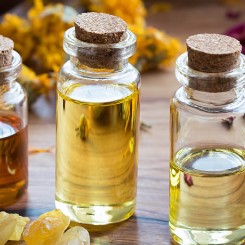 Essential Oils
Essential Oils
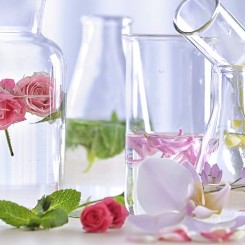 Hydrolats, Hydrosols, Floral Waters
Hydrolats, Hydrosols, Floral Waters
 Synergies
Synergies
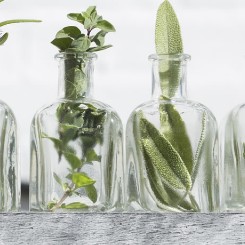 Herbal Oils
Herbal Oils
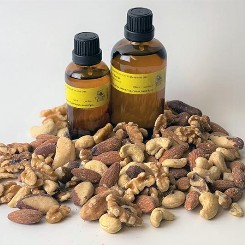 Vegetable Oils
Vegetable Oils
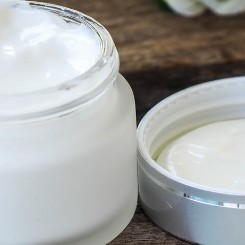 Bases
Bases
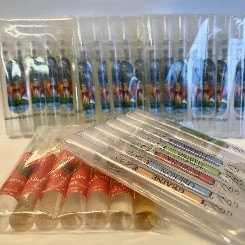 Books, Kits and Trial Packs
Books, Kits and Trial Packs
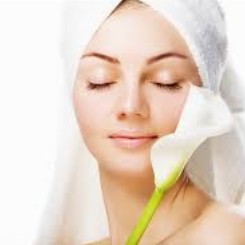 Skincare
Skincare
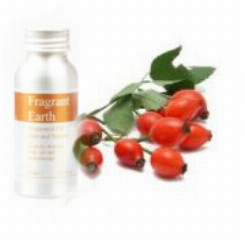 Body Care Oils
Body Care Oils
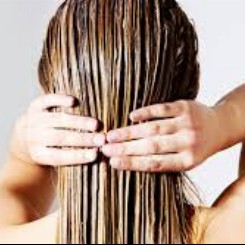 Hair Care
Hair Care
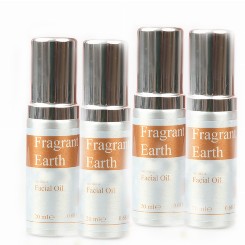 Facial Oils
Facial Oils
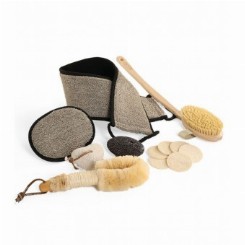 Eco Bath
Eco Bath
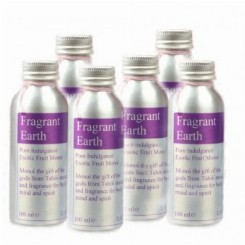 Pure Indulgence
Pure Indulgence
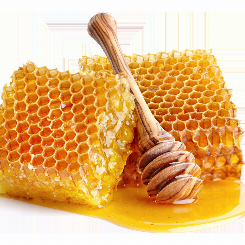 Honey, Beeswax & Propolis
Honey, Beeswax & Propolis
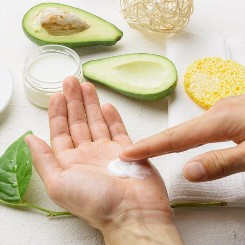 Handcream
Handcream
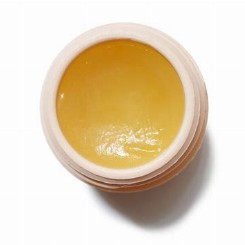 Balms, Salves & Ointments
Balms, Salves & Ointments
 Oral Care
Oral Care
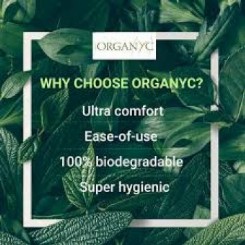 Feminine Hygiene
Feminine Hygiene
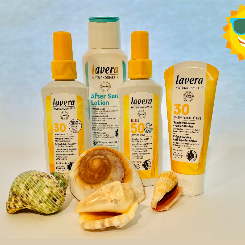 Sun Care
Sun Care
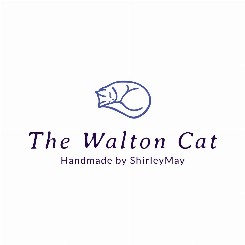 The Walton Cat
The Walton Cat
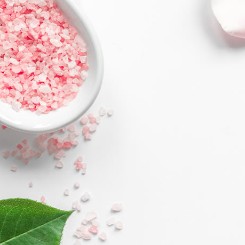 Bath Salts
Bath Salts
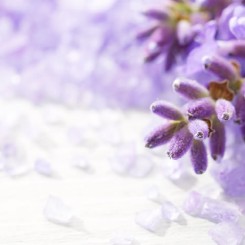 Somerset Lavender
Somerset Lavender
 Diffusers
Diffusers
 Candles
Candles
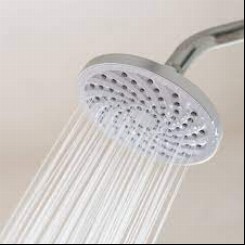 Shower Gel
Shower Gel
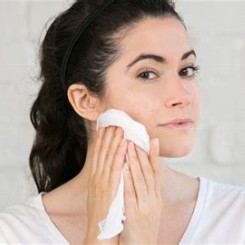 Soap
Soap
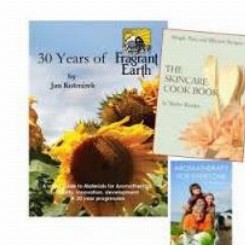 Books
Books
-245x-245x.jpg) Aromatic Waters
Aromatic Waters
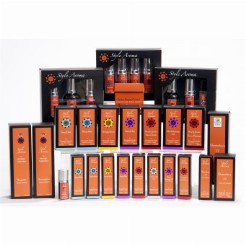 Style Aroma
Style Aroma
 Synergy Blends
Synergy Blends
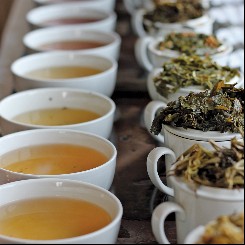 Miles Speciality Teas & Coffees
Miles Speciality Teas & Coffees
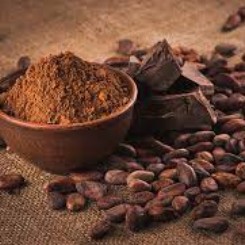 Chocolate one of life's passions
Chocolate one of life's passions